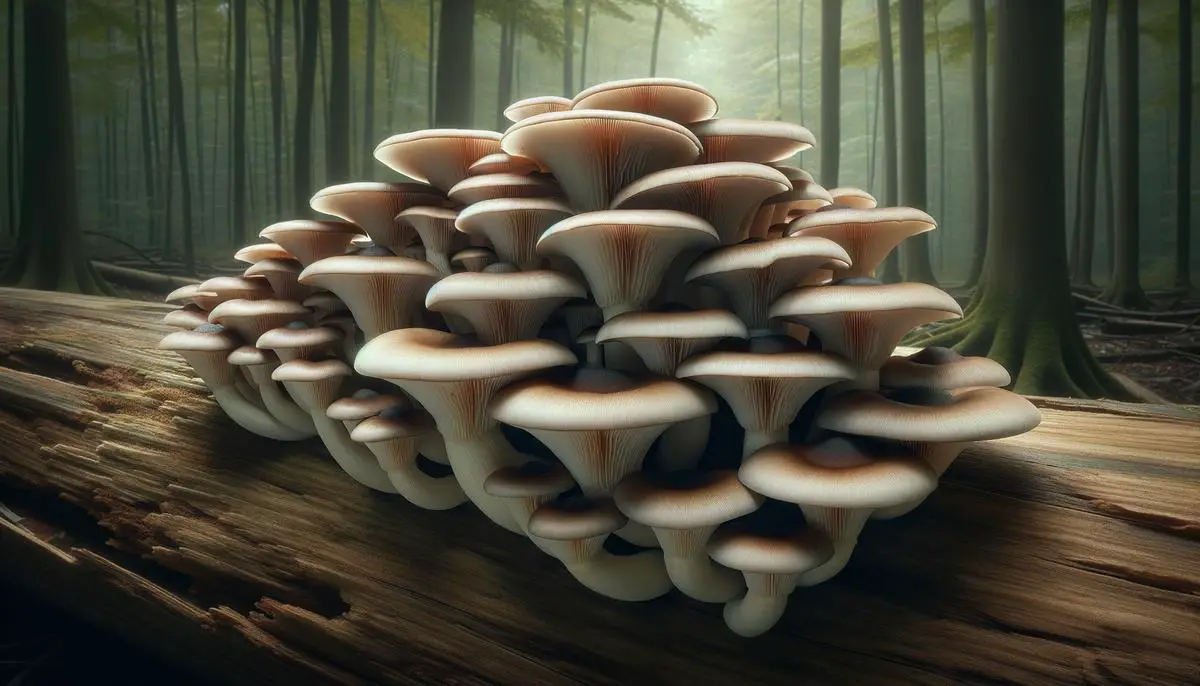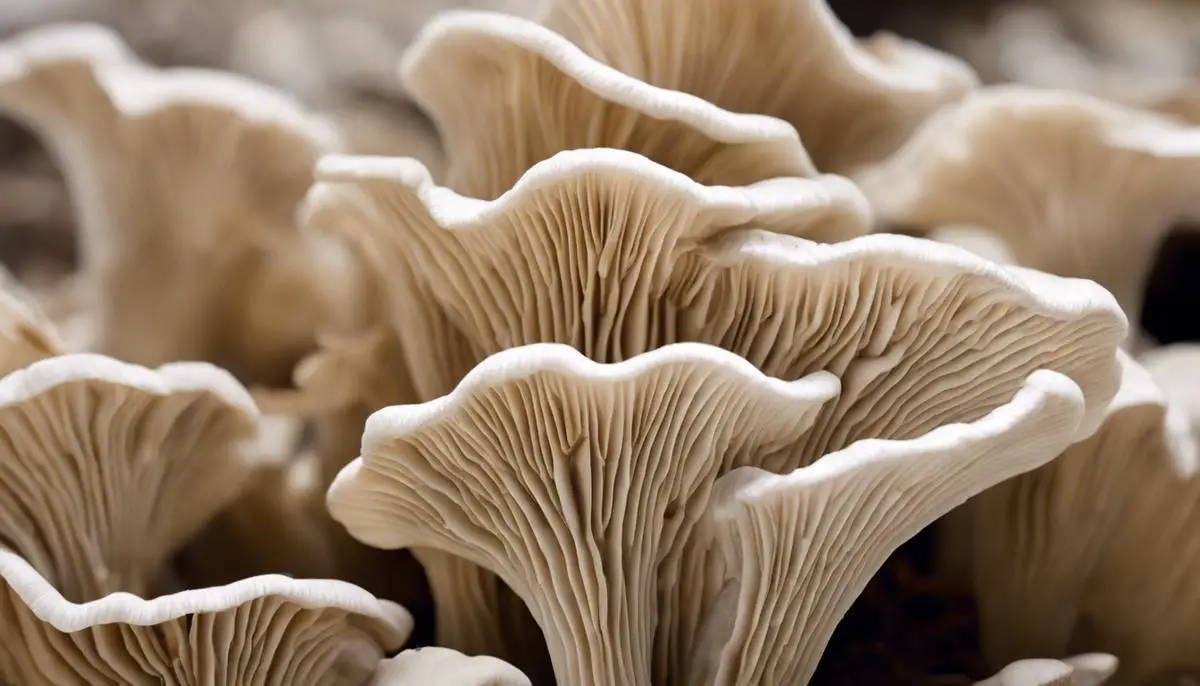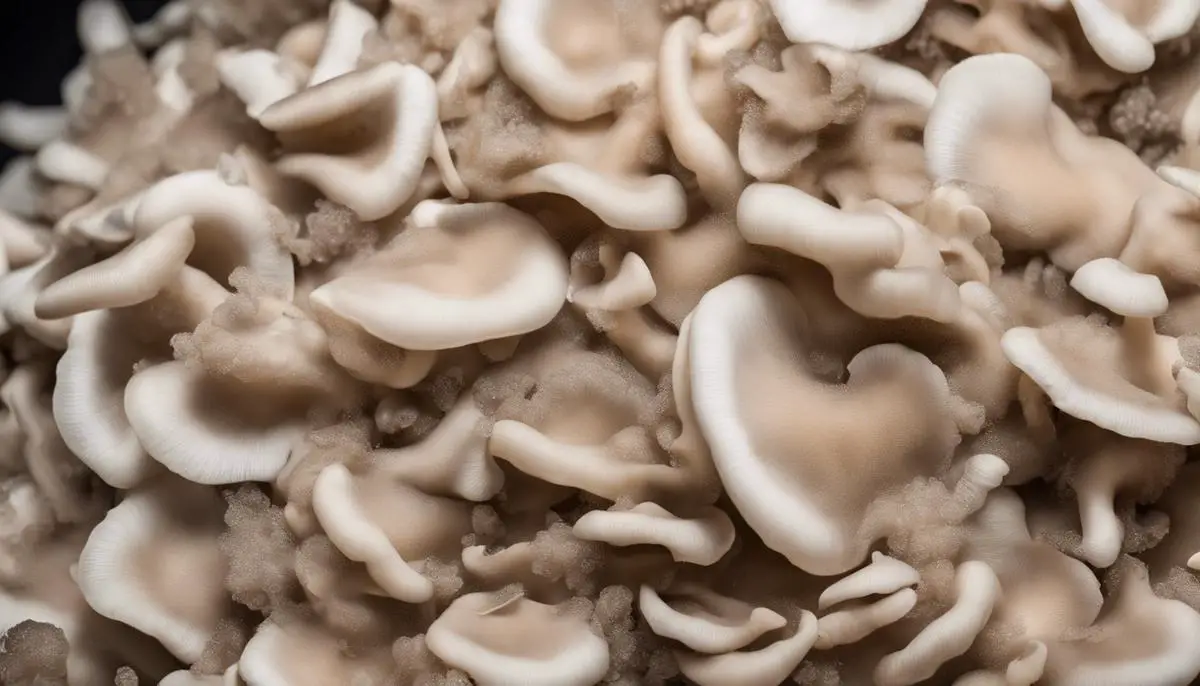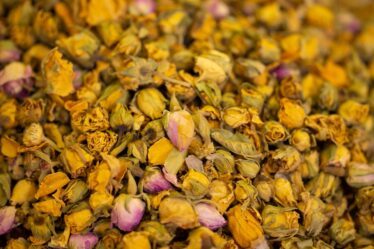
Identifying Oyster Mushrooms
Diving into the world of mushroom foraging or cultivation offers a chance to connect with nature and appreciate the often overlooked intricacies of our ecosystem. Among the many jewels of the fungi kingdom, oyster mushrooms (Pleurotus ostreatus) hold a special place. With their savory taste, velvety texture, and nutritional benefits, they are a forager's and cultivator's delight. But how do you ensure what you've stumbled upon is the coveted oyster mushroom and not a look-alike with less desirable qualities? Let's explore the process of identifying true oyster mushrooms.
First, observe their habitat. True oyster mushrooms typically grow in clusters on dead or dying hardwood logs and stumps. While wandering through deciduous forests, spotting these fungi on beech, aspen, or oak can turn your leisurely stroll into a foraging adventure. Each finding is a reminder of nature's resilience and cycle of life.
Shifting focus to the mushroom itself, the cap is a key identifying feature. Reminiscent of an oyster's shell, its shape varies from broad and fan-like to a more oval or spatulate form. Their sizes commonly range between 5 to 25 centimeters (2-10 inches) across. The cap is smooth, without warts or scales, and captures shades ranging from white to light brown. Its flesh is firm and white, and it lacks any strong, unappealing odor, perhaps having a faint anise-like scent.
Notably, oyster mushrooms feature decurrent gills. These gills extend from beneath the cap and run down into the stem (if a stem is present at all). This gill structure is a significant clue in identifying oyster mushrooms, although not every mushroom with this feature is an oyster.
However, the quest doesn't end here. In the realm of mushrooms, imposters exist. The false oyster mushroom, Omphalotus nidiformis, closely mimics our hero but lacks its culinary charm and carries poisonous traits. Distinguishing between them is essential. The false oyster prefers to grow in the dark, sometimes exhibiting bioluminescence – a trait true oysters do not possess. Another distinguishing feature lies within their spore print: true oysters leave a white to lilac-gray spore print, contrasting with the cream or pale orange marks of their deceptive counterpart.
Safety in foraging and cultivating mushrooms is about careful observation and respect for nature's nuances. Each mushroom brings its own story, a piece of a larger ecosystem puzzle. Identifying true oyster mushrooms is more than adding a delicious ingredient to your culinary creations; it's about embracing the detailed beauty of our natural world and its bountiful yet delicate offerings.
Embarking on mushroom identification relies on patience, precision, and a keen eye for natural subtleties. Whether you're out in the forest or caring for your mushroom patch at home, remember that every mushroom has its place and purpose. Respecting these fungi ensures not only a safe and rewarding experience but also a step closer to understanding the complexity of our environment. Let this understanding guide your foraging pursuits, and may your mushroom adventures be bountiful and endlessly fascinating.

Cultivating Oyster Mushrooms at Home
Embarking on the journey of cultivating oyster mushrooms at home is akin to creating a mini eco-sanctuary in your living space. The process becomes a testament to the harmonious relationship between humans and the environment. Let's explore the steps to cultivate oyster mushrooms at home.
The first step is selecting the right growth medium. For oyster mushrooms, wheat straw is a prime candidate, balancing water retention and breathability. Coffee grounds or sawdust can also be used, each bringing its own unique qualities to the cultivation process.
With your chosen growth medium prepared, attention turns to the spawn. Spawn for oyster mushrooms can be purchased from reputable suppliers. Blend your spawn with the prepared substrate in bags or containers, creating a mix rich in potential. This is the heartbeat of your cultivation, where life begins.
Managing optimal growth conditions is the next crucial step. Oyster mushrooms thrive in temperatures between 55 and 70°F (12–21°C) and require high air humidity of about 80-90%. Too low humidity can cause the mushrooms to dry up, while too high humidity can lead to microbial issues.
Water plays a leading role in maintaining the right conditions. Gentle misting keeps the humidity at the desired level and the surface of the medium sufficiently moist. This process can be easily integrated into daily routines.
Humidity and temperature control can be managed using simple tools like thermometers and humidity meters. These tools provide insight and control over the microclimate you've created for your mushrooms.
Watching your mushrooms evolve from tiny pinheads into full-fledged, fan-like structures is an experience filled with anticipation and excitement. Harvesting them at the right moment, ideally when their edges remain slightly curled under, rewards you with delectable flavors and the satisfaction of having cultivated life.
Commencing this journey marks the beginning of an exploration into mycology, patient observation, and nurturing. It speaks to the heart's capacity to find wonder in simple growth and satisfaction in harvesting what your hands and care have sown. The narrative of learning, adapting, and growing with your mushroom companions is an ever-evolving tale.

Cooking With Oyster Mushrooms
With your fresh oyster mushrooms ready in the kitchen, a realm of gourmet experiences awaits. These gems of the fungus kingdom, with their tender texture and subtly nuanced flavor profile, promise a palate-pleasing adventure and imbue meals with healthful benefits. Let's explore cooking with oyster mushrooms, aiming to elevate ordinary dishes into culinary artworks that showcase the versatility of these forest treasures.
Before cooking, ensure your oyster mushrooms are meticulously cleaned. Avoid rinsing them directly under water. Instead, gently brush or wipe them with a damp cloth to remove any lingering dirt or debris. This preserves the integrity of their texture and flavor.
One of the simplest yet satisfying ways to enjoy oyster mushrooms is by sautéing. In a hot skillet, melt some butter or heat olive oil. Once shimmering, add your cleaned and possibly torn oyster mushrooms. Avoid overcrowding the pan to achieve golden edges and a tender bite. Season with salt, black pepper, and your favorite herbs. A squeeze of lemon juice at the end adds a touch of brightness. This simple side dish or topping is ready to impress.
For a more adventurous option, consider making a vegan mushroom cream sauce. Finely chop your oyster mushrooms and sweat some onions and garlic in olive oil until translucent. Add the mushrooms, allowing them to cook down and release their moisture. Blend in coconut milk or almond milk for a dairy-free creamy base. Let the mixture simmer and thicken, stirring occasionally. A dash of white wine can introduce an elegant acidity that complements the mushrooms' savory notes. This sauce pairs well with pasta, gnocchi, or roasted vegetables.
Oyster mushrooms are incredibly versatile. They can be grilled on skewers, rubbed with your choice of spices, or folded into an earthy risotto for added depth and texture. Adventurous cooks might even try oyster mushroom tacos, pairing sautéed slices with fresh cilantro, lime, and a fiery salsa.
While experimentation is encouraged, it's equally important to let the intrinsic flavors of the oyster mushrooms shine through. They are not merely an ingredient but a co-narrator in the story of your dish.
As you embark on this gastronomical journey with oyster mushrooms, view each meal as an opportunity to pay homage to the complex, umami-packed marvels that these fungi bestow upon our plates. Whether aiming for a casual weeknight dinner or an elegant meal for a special occasion, oyster mushrooms are your gateway to uncharted culinary territories. Happy cooking!

In conclusion, engaging with oyster mushrooms transcends mere culinary delight; it embodies a connection to nature's cycles and bounty. By fostering an environment where these fungi can thrive, whether in forests or our homes, we participate in a symbiotic relationship that enriches both our environment and dining experiences. Let this awareness guide us as we continue to discover the nuanced beauty and utility of oyster mushrooms.
- Stamets P. Growing Gourmet and Medicinal Mushrooms. 3rd ed. Berkeley, CA: Ten Speed Press; 2000.
- Crisan EV, Sands A. Nutritional Value. In: Chang ST, Hayes WA, eds. The Biology and Cultivation of Edible Mushrooms. New York, NY: Academic Press; 1978:137-168.
- Royse DJ. Cultivation of Oyster Mushrooms. University Park, PA: Penn State Extension; 2003.



